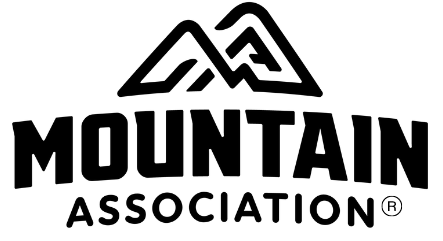The Appalachian Regional Commission held a strategic planning webinar for Central Appalachia on June 16, soliciting input from community members on what the Commission's 2011-2016 strategic plan should focus on and prioritize.
1. Increase energy efficiency in homes, buildings and businesses
Central Appalachia has high energy usage related to a historic neglect of energy efficiency. Kentucky’s residential sector, for example, uses 24 percent more energy on average than the nation, and a recent ARC report projected that energy usage in Appalachia will grow at a rate 50 percent higher than the nation between now and 2030.High energy usage and inattention to energy efficiency have been fed by low electricity prices from coal-fired power. But those prices are rising dramatically (up 40% in Kentucky in the last five years alone) and will increase further in future years.
High energy usage has a lot to do with sub-standard housing and lack of investment in the existing building infrastructure. More than 100,000 families in Central Appalachia lack access to quality housing. Central Appalachian homes are three to four times more likely to be substandard in comparison to homes elsewhere in the nation. Approximately 25 percent of the housing stock consists of manufactured homes, most of which are highly inefficient, a share that rises to 40 percent in some counties.
2. Expand local renewable energy production
Central Appalachia’s historic reliance on coal has also meant little progress in diversifying into renewable energy sources. However, the region possesses real renewable energy potential. Wind power is possible at distributed and at utility scale, particularly on ridgetops in Central Appalachia. At the higher hub heights of modern wind turbines, West Virginia has at least 2,772 MW of wind potential, and the best wind potential in Kentucky is in the counties in the southeastern coalfields.
Federal investment could support existing efforts and create new models. USDA Rural Utility Service financing for renewable energy production and energy efficiency efforts could assist regional electric utilities in beginning to transition. A set-aside of funds for Central Appalachia through such sources as the USDA Rural Energy for America Program and the Department of Energy (DOE) Energy Efficiency and Conservation Block Grant could support local planning and establish needed demonstrations of community-scale renewable energy.
3. Increase sustainable management of forestland and build a sustainable forest economy
About 70 percent of the land in Central Appalachia is forested, and the region possesses a diverse hardwood forest mix. But the forests suffer from high-grading—the removal of only high quality trees to the degradation of forest quality—and the prevalence of predatory or irresponsible logging practices. Over 90 percent of the forestland is privately owned, most often by families in small tracts or by absentee landholding companies. There are few incentives or resources for private landowners to pursue sustainable forestland management, and few opportunities for local communities to have a say in the use of forestland owned by outside corporate interests.
Federal assistance could help establish a certification support center that would help small landowners and wood products businesses obtain certification. A wood products competitiveness corporation could help primary and secondary manufacturers grow, modernize and cooperate. Expanded support for management planning and cost-share programs could increase private forestland management and fill the gap of federal government budget cuts. To make woody biomass a sustainable opportunity would require more research to create harvesting guidelines, understand the relationship between biomass supply and potential demand, and identify which technologies are most beneficial economically and ecologically. And a land bank for community financing and purchase of pre- and post-mine land for sustainable forestry activities could expand local control of land currently owned by outside interests.
4. Support expansion of a sustainable local foods system
The growing demand for local, healthy and sustainably produced foods in the region’s urban fringe is juxtaposed with a fairly widespread lack of access to good foods (due to distance, income and market hurdles) within the region, especially for lower income people. Health problems linked to poor diets are major issues in the region, and efforts to increase access to good local food are a critical part of the solution. In addition, there is significant economic and job creation potential in the food and farming sector. Economist Ken Meter found in 2007 in Virginia that $2.2 billion in annual income could be created for farmers if all of the state’s residents bought local farm products just one day a week.
Federal investment could build upon these local efforts by, for example, creating a grants pool administered by ARC and USDA that would expand these initiatives and launch new ones. Other new USDA financing and assistance efforts supportive of local food enterprises and initiatives could include set-asides for Central Appalachia, such as new the Rural Microentrepreneur Assistance Program.
5. Invest in environmental remediation and restoration of land
Communities in Central Appalachia face serious challenges in how to remediate surface mined land as well as how to deal with the impacts of acid mine drainage, slurry ponds and other issues. While proper remediation methods can never restore land to its pre-mining condition, and should not be an excuse for allowing continued destructive practices, there is a need for strategies to address the damage that has already happened. While the 1977 Surface Mining Control and Reclamation Act (SMCRA) sought to address the reclamation of land that was mined both before and after passage of the act, numerous problems with the design and implementation of the law have meant inadequate progress in remediating those sites.
The federal government should direct more resources to environmental remediation in Central Appalachia through changing the formulas in the AML and other programs. It should increase support for innovative and improved efforts at reclamation, including the Appalachian Regional Reforestation Initiative, the work of John Todd and Samir Doshi at the University of Vermont, and local efforts like those of East Kentucky Biodiesel that look to combine land restoration with bioenergy production. Decisions should be driven by citizen involvement and local planning to decide the best use of these lands.





